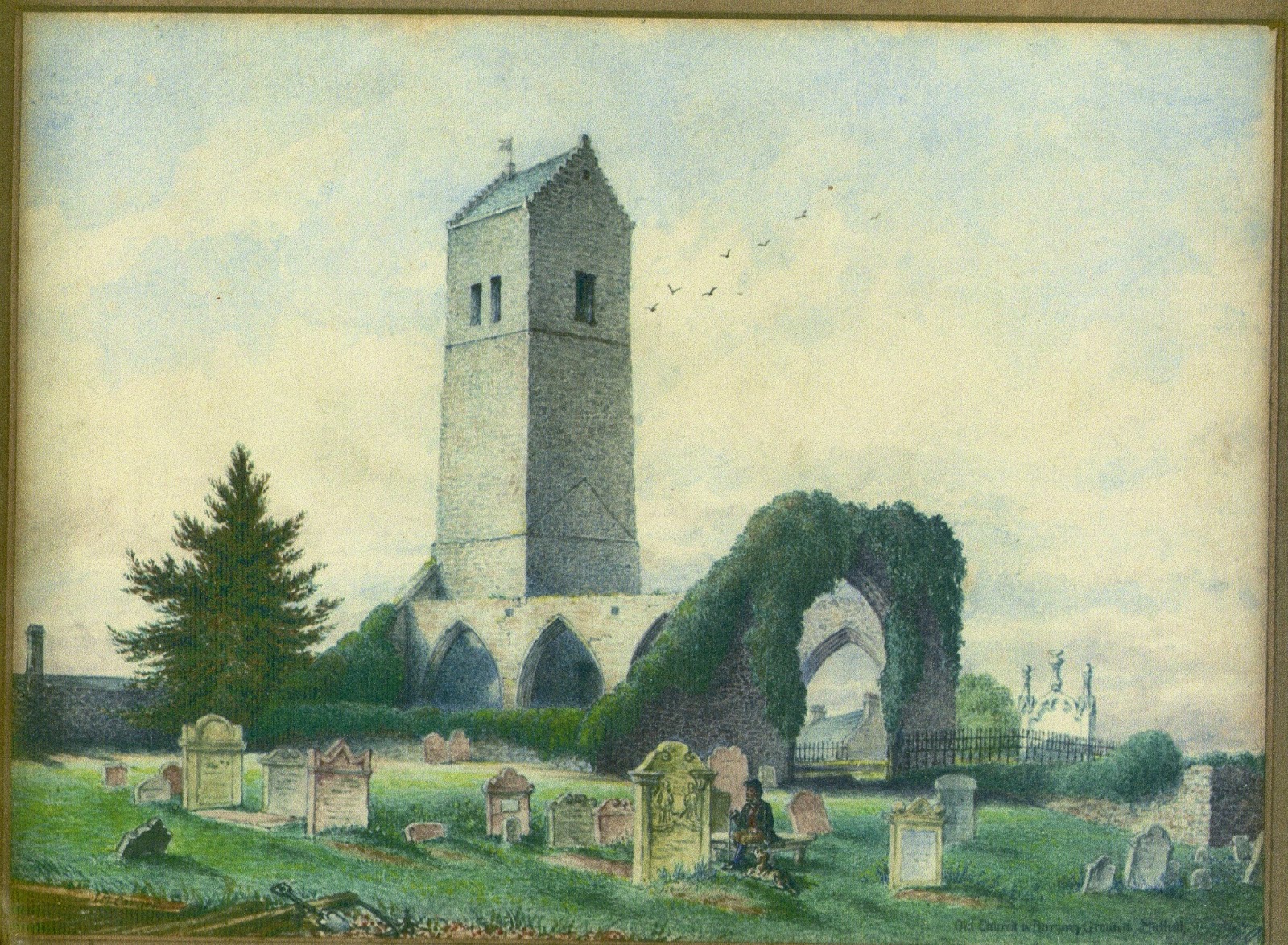Episcopacy in Strathearn
A History of the Church at
Muthill from the earliest times to the present day
( written in 1907 )
An Early Period
The beautiful valley of the earn extending from Balquhidder
to Newburgh was in olden days one of the distant routes of communication
between the extreme west of Scotland and the east . The influence of the first
Christian missionaries beginning in the west of Argyllshire soon extended
itself to the east by the valleys lying between Loch Lomond and Loch Earn , and
the track of the missionaries can still be made out with little difficulty by the existence of place names and Church dedications .
Of the character of
that Irish Christianity that thus came
into Scotland ,there is little dispute
today .Generally speaking it partook of the character of ordinary
Western Christianity , with this exception that whereas in the more highly
organised parts of Western Europe it was diocesan , in Ireland and
Scotland it was at that time monastic.
The Celtic Church knew well the difference
between a Presbyter and a Bishop , and Bishops performed the ordinary
functions of their office here as
elsewhere , but the jurisdiction of the Church
was in the hands , not of the
Bishop, but of the Abbots . This , which is now a state of things well known to
students , does not affect the constitution of the Church in the least , and it
is strictly true to say that the first Christian teachers in Strathearn were members
of an Episcopal Church ( no other had yet been conceived of ), ordained
by Bishops , and holding the ordinary doctrines
of the Christian faith current at the time .
The early history of the faith at Muthill is involved in
great obscurity; but there seems little reason to doubt the common tradition
that connects it with Irish or Scoto – Irish
Missionaries . There are several places in the district where the name
Patrick occurs , and a study of the ancient records of the Parish shows that the name Patrick was , at least until
comparatively recent times , one of the commonest male names .
In all probability the first preacher of Christianity was St
Fergus, who was at work at Strageath and
Muthill about the year 650 . He is supposed to have founded the Church at
Strageath and built it in honour of St
Patrick , and Dalpatrick Ford across the Earn , just a little below Strageath
still preserves the name of the great Bishop . That the dedication played a
great part and entered very deeply into the life of the district is attested by the fact , related by the
writer of the statistical account of the parish , in the 18th
century , who says that St Patrick’s Day
was even then kept as a holiday , and
that no sound of labour was to be heard all over the parish on that day.
The history of the Church at Muthill in the period of the
Middle ages is closely connected with the history of the great Earls of Strathearn . These were
not only great noblemen but great churchmen , and Fordun relates of Earl
Gilbert that he divided his estate into
three parts – one for the Bishopric of Dunblane , one for the Canons of
Inchaffray, and one for himself . His brother Malise , who was greatly
interested in the Abbey of Lindores ,
somewhere between the years 1195 and
1199 granted Muthill Church to
Guildo , the first Abbot and so set in motion a long course of litigation , which may be
traced in the book published in the early 20th century called the “
Abbey of Lindores “ and written by the then Bishop of Edinburgh .
Muthill , it seems , was a mensal of Dunblane which just
means that the revenues of the Parish of Muthill , after providing for the
necessary clerical duties , went to support the Bishop of Dunblane . . When
Muthill Church became connected with the
monastery ( ie Lindores ) , the flocks and herds on the Church lands were
exempted from paying tithes , and
consequently , the income of the Bishop was reduced . Against this
reduction he appealed to Rome , and the Pope appointed certain
judges –the Prior of St Andrews – the Prior of May and the Archdeacon of St
Andrews to investigate the case . About the year 1213 , William , Bishop of St
Andrews settled the claim by deciding that Lindores should pay ten marks
annually in lieu of the tithe and in 1235 this judgement was , on appeal , reduced
to five marks .During the progress of the dispute one or two names of
ecclesiastics occur and these practically are all the record we have for this
period .
Padin signed a charter as “ Presbyter of Mothell “ in 1235 and
the same document is witnessed by Maurice ,” Prior of the Keledei at Mothell ”
. ( The Keledei referred to are the Culdees - the ancient Celtic Church whose name
is found dotted all over the Strath in a variety of place names ).
The Charters of Lindores bring out a fact hitherto unknown about Muthill . In one charter
, which is dated about 1220 , there is reference to Maldunvenny, who is described as Rex scolarum de Mothell . The expression
is not a common one but it points to
the fact that Muthill must be added to
the list of places possessing schools in
those early days . These schools , closely connected as they were
, with the Church , were doubtless a survival of a corresponding Celtic institution , and show that Muthill must have been a place of considerable importance for the time .




.jpg)
Comments
Post a Comment